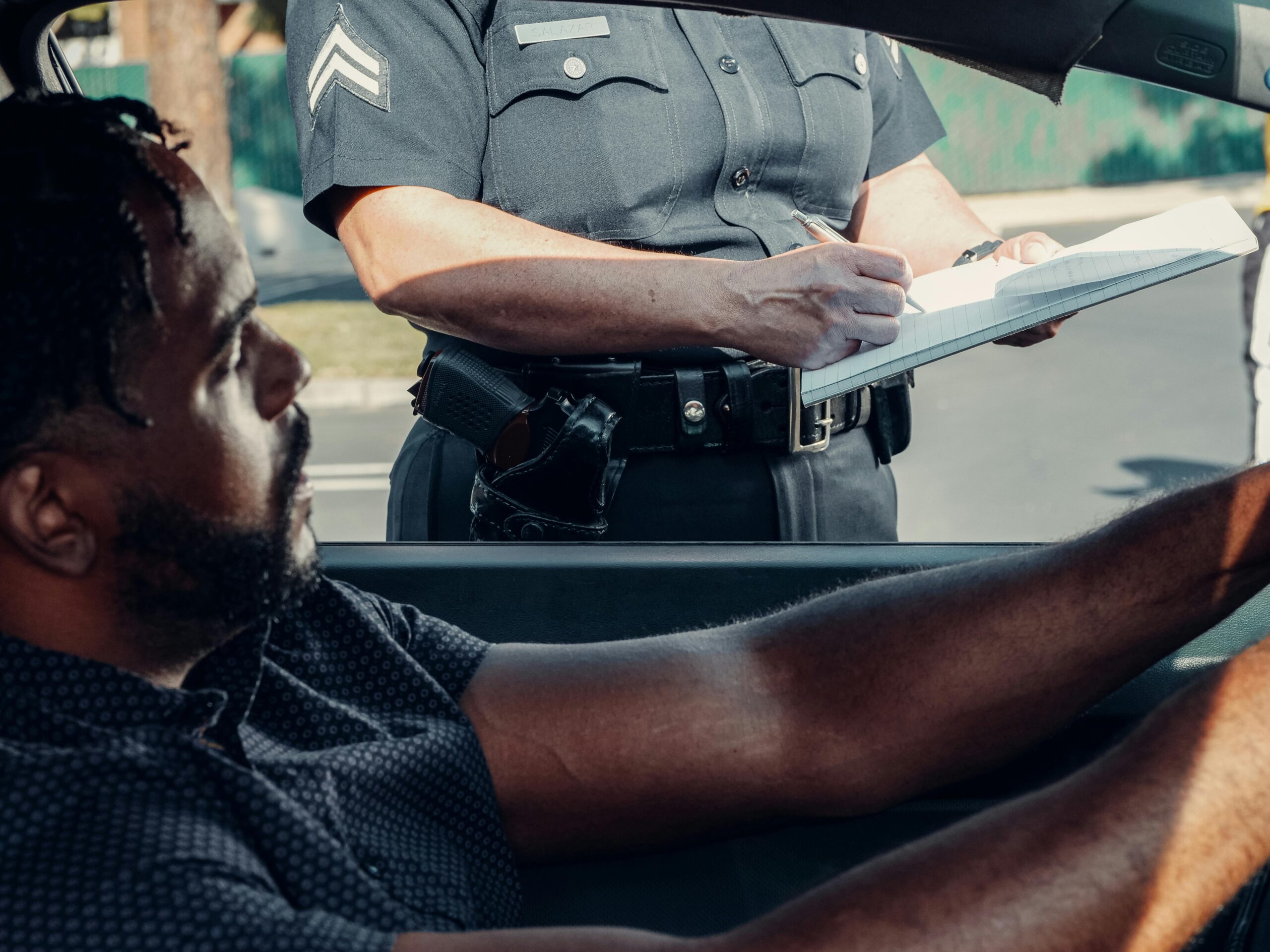Have you ever wondered, is it against the law to drive without shoes? This seemingly simple question sparks curiosity among many drivers. While some may feel liberated to drive barefoot, others are left questioning the legality of this practice. In this post, we will discover the truth behind the myths and facts of driving without footwear. Is it just a matter of comfort, or could it lead to unexpected legal troubles? Surprisingly, the law varies by state, and many people don’t know the specific regulations that govern this issue. Some might think that driving without shoes can impede pedal control, while others argue that it’s perfectly safe. So, what does the law really say? Are there any fines or penalties for going shoeless behind the wheel? Join us as we delve into this intriguing topic, uncovering the legalities and safety concerns surrounding driving barefoot. Whether you’re a casual driver or a road trip enthusiast, knowing the rules could save you from potential legal headaches. Let’s explore this fascinating issue and ensure you’re informed before your next adventure on the road!
Debunking Myths: Is Driving Barefoot Really Illegal? Uncover the Truth Now!
Is driving barefoot really illegal? This question gets asked a lot, and many people seem to have all sorts of opinions about it. Some say it’s perfectly fine, while others claim it could land you in trouble. If you’ve ever wondered, “Is it against the law to drive without shoes?” you’re not alone. Let’s dive into the facts and debunk the myths surrounding this topic.
The Basics of Driving Barefoot
First, it helps to know that in the United States, driving laws vary from state to state, and New York is no exception. However, driving barefoot is not explicitly mentioned in New York’s traffic laws. This means that, technically, you can legally operate a vehicle without shoes. But just because it’s legal doesn’t mean it’s advisable.
Some people argue that driving barefoot can be unsafe. Here’s why:
- Lack of Traction: Shoes provide grip, which is important for controlling the pedals. Without them, your feet might slip.
- Foot Protection: In case of an accident, bare feet are more vulnerable to injuries.
- Distraction: Not wearing shoes might actually distract some drivers, making them less focused on the road.
Myths About Driving Without Shoes
It’s important to separate fact from fiction when it comes to driving barefoot. Here are some common myths that need debunking:
Myth: It’s Illegal to Drive Barefoot
- Truth: There’s no law in New York that prohibits driving without shoes.
Myth: You Can Get Pulled Over for Not Wearing Shoes
- Truth: Law enforcement won’t stop you just for being barefoot while driving.
Myth: Driving Barefoot Increases Your Chances of an Accident
- Truth: While some argue this, studies show that accidents are not necessarily linked to footwear.
Myth: All States Have Laws Against Barefoot Driving
- Truth: Most states, including New York, have no specific laws against it. However, a few states do have ambiguous regulations.
The History of Driving Regulations
Understanding the history of driving regulations can give insight into why some myths persist. When cars became popular in the early 20th century, laws focused mainly on vehicle operation and road safety. Footwear was never a primary concern. Over the decades, as traffic laws evolved, the focus shifted to driver behavior and vehicle safety rather than what drivers wore on their feet.
Safety Considerations
While it’s legal to drive barefoot in New York, there are some safety considerations to keep in mind. Here’s a list of pros and cons for driving without shoes:
Pros:
- Comfort: Some people feel more relaxed and in control without shoes.
- Better Feel: You may have a better sense of the pedals with bare feet.
Cons:
- Risk of Injury: In an accident, your feet are more exposed.
- Potential for Slipping: You might not have the same control over the pedals.
What You Should Know
If you’re considering driving barefoot, here are some practical tips to stay safe:
- Test Your Comfort: Before hitting the highway, practice driving in safe areas to see how you feel.
- Keep a Pair of Shoes Handy: In case of an emergency or if you feel uncomfortable, it’s always good to have shoes available.
- Know Your Rights: If you ever get pulled over, know that driving barefoot is not an infraction in New York.
Comparison Table: Driving Barefoot vs. Driving with Shoes
| Factor | Driving Barefoot | Driving with Shoes |
|---|---|---|
| Legality | Legal in NY | Legal in NY |
| Control | Can feel less secure | Generally provides better grip |
| Comfort | More natural feel | Can be restrictive |
| Risk of Injury | Higher in an accident | Lower due to foot protection |
| Distraction | Can be a factor | Generally less distracting |
So, is it against the law to drive without shoes? The answer is clear: in New York, it is not illegal. However, weighing the safety aspects and being aware of the potential risks involved is crucial. Whether you prefer to drive barefoot or with shoes, the most important thing is to stay safe on the roads. Remember to always prioritize control and awareness behind the wheel, no matter what you’re wearing on your feet.
Top 5 Reasons You Shouldn’t Drive Without Shoes: Safety Concerns You Can’t Ignore
Driving without shoes might seem like a harmless act, but it’s more dangerous than you think! Whether you’re running to the store, cruising down the highway, or just leaving a friend’s house, you might consider going barefoot. But before you do, let’s take a look at the top five reasons you shouldn’t drive without shoes. Plus, we’ll dive into the question: is it against the law to drive without shoes? The answers may surprise you!
1. Safety Concerns You Can’t Ignore
When you think about it, driving is a serious responsibility. Your vehicle is a powerful machine, and any distraction or discomfort can lead to accidents. Driving without shoes can seriously affect your control over the pedals. Here’s why:
- Lack of Grip: Bare feet can slip off the pedals easily. Shoes, especially those designed for driving, provide necessary friction.
- Injury Risk: If you need to brake suddenly, your foot can get injured if you hit the pedal with bare skin. Think about it – a metal pedal on a hot day? Ouch!
- Reduced Reaction Time: Without shoes, you might not be able to react as quickly. In emergencies, every second counts.
2. It Can Be Distracting
Driving is all about focus. When you’re barefoot, the sensation of the pedals can be distracting. Your brain might be more focused on how uncomfortable or weird it feels instead of the road ahead. Here’s how distraction can manifest:
- Fidgeting: You may start to fidget with your feet, taking your mind off driving.
- Temperature Sensitivity: Your feet might get too hot or cold, causing discomfort that diverts your attention.
- Balance Issues: It’s harder to maintain balance on the pedals without shoes, which can lead to mistakes.
3. Is It Against The Law To Drive Without Shoes?
So, is it illegal to drive without shoes? The short answer is no, not directly. Most states, including New York, do not have specific laws against driving barefoot. However, this does not mean it’s a good idea. Here are some key points to consider:
- Negligence: If you get into an accident while driving barefoot, an insurance company might argue that you were negligent. This could affect your claim.
- Local Regulations: While state laws might not ban it, some local jurisdictions could have their own rules. Always check local laws to be sure.
- Potential Fines: If driving barefoot leads to an accident or reckless driving charge, you could face fines or penalties.
4. Alternative Footwear Options
If you’re thinking about driving, it’s worth considering what you can wear instead of going barefoot. Here’s a quick list of footwear options that are more suitable for driving:
- Flip-Flops: While not the best option for safety, they’re better than nothing.
- Sneakers: They provide grip and comfort, making them ideal for driving.
- Sandals with Straps: These can offer some protection while still being comfortable.
- Driving Shoes: Designed for optimal control, these shoes can enhance your driving experience.
5. Common Myths About Driving Without Shoes
There are several myths surrounding driving without shoes. Let’s dispel some of them:
- Myth 1: It’s Completely Safe: As discussed, it’s not safe at all.
- Myth 2: No One Gets Caught: You may not get pulled over specifically for driving barefoot, but if it leads to an accident, you’ll regret it.
- Myth 3: Everyone Does It: Just because some people do it doesn’t mean it’s right or safe.
Practical Examples of Consequences
Imagine driving without shoes and suddenly needing to brake. Your foot slips off the pedal, and you miss the chance to stop in time. This could lead to an accident, legal repercussions, and injuries. In New York, where traffic can be heavy and unpredictable, being barefoot can amplify these risks.
Furthermore, there have been cases where drivers faced increased insurance premiums after accidents attributed to negligent driving behaviors, including not wearing shoes. It’s a slippery slope that can lead to serious consequences!
It’s easy to overlook the importance of proper footwear while driving, but safety should always come first. Whether or not it’s illegal, the risks involved in driving without shoes are too high to ignore. So next time you think about kicking off your shoes, remember the potential dangers and think twice. Your feet and your safety deserve better!
Is It Against the Law to Drive Without Shoes? Exploring State-by-State Regulations
Is it against the law to drive without shoes? This question might sound silly to some, but many people wonder about the legality of such a quirky driving habit. Laws can be confusing, and driving regulations often vary from state to state. So, let’s dive into the facts, explore what different states say about driving without shoes, and discover if you can legally cruise around barefoot.
The Basics of Driving Without Shoes
First of all, driving barefoot is not explicitly illegal in most states in the United States. However, that doesn’t mean that it’s always a good idea. Some states have laws about operating a vehicle in an unsafe manner, which could include driving without adequate footwear.
Driving barefoot might not directly get you a ticket, but if an officer believes that your lack of shoes contributes to reckless or negligent driving, you could face consequences. This could be especially true if you were in an accident.
State-by-State Overview
Let’s break down some states and what they say about driving without shoes. Here’s a handy list for you:
New York: No law against driving barefoot. But, if you cause an accident, it could be considered unsafe.
California: It’s legal to drive without shoes. However, officers can still cite for reckless driving if it appears unsafe.
Texas: No specific law against it. But again, if it leads to an accident, you might face charges.
Florida: Driving barefoot is allowed. Though, as with other states, it can be deemed negligent in certain situations.
Illinois: There is no law prohibiting driving without shoes. However, driving barefoot can lead to potential safety concerns.
Ohio: No law against driving barefoot. But if it affects your ability to control the vehicle, it could be an issue.
Virginia: It’s perfectly legal to drive without shoes, but be cautious as it may be seen as a factor in an accident.
Pennsylvania: Driving without shoes is allowed. But if it’s determined to be unsafe, there might be repercussions.
Why Do People Drive Without Shoes?
There’s a variety of reasons why someone might choose to drive barefoot. Here are some common ones:
Comfort: Some people find it more comfortable to drive without shoes, especially during hot weather.
Convenience: People often forget to put on shoes when they are in a rush or simply prefer to kick them off while driving.
Cultural practices: In some cultures, being barefoot is more common and seen as normal.
Health reasons: Certain medical conditions might make wearing shoes uncomfortable or painful.
Risks of Driving Without Shoes
Even if it’s not illegal, driving without shoes can pose risks. Here’s a list of potential issues:
Lack of traction: Bare feet can slip off the pedals, especially if they’re wet or sweaty.
Injury: In the event of an accident, your feet are more vulnerable to injury without shoes.
Legal implications: If you get pulled over or are involved in an accident, your lack of shoes might be brought into question.
Historical Context
The topic of driving without shoes has been around for ages, and it reflects a broader discussion about driving regulations and public safety. Laws have evolved over time, often in response to accidents and safety studies. In the past, there were more stringent regulations regarding footwear, but they have relaxed in many areas as society changed.
Final Thoughts
So, is it against the law to drive without shoes? In most states, the answer is no, but always keep in mind that driving barefoot can lead to unsafe conditions and potential legal issues. It’s crucial to consider the risks involved and how your actions might be perceived by law enforcement. If you’re unsure, it’s always safer to wear shoes while driving. After all, being responsible on the road benefits everyone, and sometimes a little common sense goes a long way.
Driving Barefoot: What Every Driver Needs to Know About Legal Risks and Safety
Driving barefoot is a topic that stirs up a lot of questions among drivers. Many people wonder, “Is it against the law to drive without shoes?” The answer is more complicated than you might think. Some people think it’s dangerous, while others believe it’s totally fine. So, let’s dive into what every driver needs to know about the legal risks and safety concerns of driving barefoot.
The Legal Landscape of Driving Barefoot
In the United States, there is no federal law that specifically prohibits driving barefoot. Most states, including New York, do not have a law that says you must wear shoes while driving. However, it’s important to understand that just because it’s legal, doesn’t mean it’s always safe.
- No Specific Law: No state law explicitly says you can’t drive without shoes.
- Safety Concerns: Driving barefoot can present challenges, particularly in emergency situations.
Safety Risks of Driving Barefoot
While it may be legal to drive barefoot, it’s not necessarily the safest option. Here are some reasons why:
- Lack of Traction: Without shoes, your feet may slip off the pedals, making it harder to control the vehicle.
- Injury Risk: In the event of an accident, your bare feet are more exposed and could sustain injury.
- Reduced Control: Shoes often provide better feedback from the pedals, helping drivers react quickly.
Historical Context: Driving Barefoot
Historically, many cultures have driven barefoot, especially in warmer climates. In the past, it was more common to see people driving without shoes, as the concept of wearing footwear for driving wasn’t emphasized. However, as road safety regulations evolved, the idea of proper footwear gained traction.
Key Takeaways About Driving Barefoot
When it comes to driving barefoot, here are some key points to consider:
- Legal But Not Recommended: While legal, many safety experts advise against it.
- Insurance Implications: If an accident occurs while driving barefoot, it could affect your insurance claim.
- Local Laws: Always check local laws as they can vary from place to place.
What to Do if You Get Pulled Over
If you find yourself pulled over while driving barefoot, here’s how to handle the situation:
- Stay Calm: Keep your cool and be polite.
- Explain Your Situation: If asked about your footwear, explain that you were driving barefoot for comfort or convenience.
- Be Prepared: Have your identification and registration ready to present.
Driving Safely: Tips for Barefoot Drivers
If you choose to drive without shoes, consider these tips for safety:
- Know Your Vehicle: Familiarize yourself with how your pedals feel without shoes.
- Drive at Low Speeds: If possible, limit your driving to low-speed areas until you feel comfortable.
- Practice: Take short drives to practice controlling the pedals without shoes.
Alternatives to Driving Barefoot
If you find driving barefoot uncomfortable or risky, here are some alternatives:
- Flip-Flops: These allow for some foot protection while still being comfortable.
- Socks: Driving in socks can provide a barrier while still allowing for good pedal feel.
- Driving Shoes: There are specially designed shoes that provide the necessary grip and comfort for driving.
Common Misconceptions About Driving Barefoot
Many myths exist about driving without shoes. Here are a few common misconceptions:
Myth: You can be ticketed for driving barefoot.
- Fact: No law states that driving barefoot is illegal.
Myth: It’s always safer to wear shoes.
- Fact: Depending on the situation, some people find they have better control barefoot.
Myth: Only certain types of footwear are acceptable while driving.
- Fact: While shoes are recommended, no specific type is required by law.
In summary, while it is legal to drive without shoes in New York and many other states, it’s essential to weigh the safety risks and potential legal implications. Make informed choices based on your comfort and the laws in your area. Whether you decide to drive barefoot, in sandals, or in specialized driving shoes, prioritizing safety is key.
The Barefoot Driving Debate: What Experts Say About Safety and the Law
The Barefoot Driving Debate: What Experts Say About Safety and the Law, Is It Against The Law To Drive Without Shoes? Discover The Truth, is it against the law to drive without shoes
Driving barefoot has been a topic of much discussion among drivers, safety experts, and lawmakers. Many people wonder if it’s illegal to drive without shoes. The answer is not as straightforward as one might think. While some states have specific laws regarding footwear while driving, New York doesn’t have a law that explicitly prohibits driving barefoot. However, there are many factors to consider when driving without shoes, especially in terms of safety.
Is It Legal to Drive Barefoot in New York?
In New York, there is no specific law that states you must wear shoes while driving. This means technically, you can drive barefoot. But, just because something is legal doesn’t mean it’s a good idea. The New York State Department of Motor Vehicles (DMV) states that the most important thing is to operate the vehicle safely.
However, if driving barefoot leads to an accident, you could potentially face consequences. Insurance companies may deny claims, arguing that lack of proper footwear contributed to the incident. This could lead to financial responsibility for damages, so it’s crucial to think about the risks involved.
What Do Safety Experts Say?
Experts have mixed opinions about driving without shoes. Some argue that it is safer, while others believe it poses risks. Here’s a summary of what they say:
Better Control: Some drivers feel that being barefoot allows for better pedal control and sensitivity. They argue that shoes can sometimes slip off pedals or make it harder to feel the pressure needed.
Increased Risk of Injury: On the flip side, if an accident occurs, being barefoot may increase the risk of injury. Bare feet lack the protection shoes provide, which can be crucial in an accident.
Footwear Type Matters: Not all shoes are created equal when driving. High heels, flip-flops, and bulky boots can impede a driver’s ability to operate a vehicle safely. Experts recommend closed-toe shoes that securely fit.
Historical Context of Barefoot Driving Laws
The discussion around barefoot driving isn’t new. Historically, laws regarding footwear have varied widely. In many states, there are no explicit laws, but some states have had regulations in the past. This inconsistency creates confusion among drivers. Here’s a quick overview of how laws have changed over time:
Early 1900s: Many states did not have any regulations on driving footwear.
Mid-20th Century: As car accidents increased, states began focusing on driver safety, but the emphasis was more on seatbelts and distracted driving.
Modern Day: Today, most states, including New York, focus on overall vehicle operation safety rather than specific footwear laws.
Pros and Cons of Driving Barefoot
Deciding whether to drive without shoes can depend on various factors. Here’s a list of pros and cons:
Pros:
- Greater foot sensitivity and control.
- Comfort during hot weather.
- Less chance of shoes slipping off pedals.
Cons:
- Increased risk of injury in case of an accident.
- Potential for insurance issues after an accident.
- Difficulty controlling the vehicle in some situations.
Practical Examples of Safe Driving
To illustrate the importance of footwear while driving, consider these real-life scenarios:
Scenario 1: A driver wearing flip-flops finds that the shoe slips off while trying to brake quickly. This could lead to an accident, especially on a busy New York City street.
Scenario 2: A person driving barefoot feels more connected to the vehicle. However, in a sudden stop, their feet might not provide the necessary grip, risking a loss of control.
Summary of Recommendations
For those who choose to drive barefoot, here are some recommendations to ensure safety:
- If you must drive barefoot, make sure you’re familiar with your vehicle and how it responds to your foot movements.
- Avoid driving in adverse weather conditions to reduce risks.
- Consider keeping a pair of shoes in your car for emergencies or unexpected trips.
Ultimately, while driving barefoot is legal in New York, it can lead to complicated situations. The best approach is to be aware of your surroundings, understand your vehicle, and always prioritize safety. Whether you choose to wear shoes or not, being a responsible driver is what matters the most on the road.
Conclusion
In conclusion, while driving without shoes may not be explicitly illegal in most jurisdictions, it is essential to consider the safety implications and potential consequences of such an action. Many experts agree that driving barefoot can reduce control over the vehicle and may lead to accidents. Additionally, some states may interpret driving without proper footwear as reckless or careless behavior, which could result in fines or penalties. Ultimately, it’s crucial for drivers to prioritize safety and comfort while behind the wheel. If you often find yourself driving without shoes, consider investing in a comfortable pair of driving shoes that provide the necessary grip and support. Always stay informed about local laws and regulations, as they can vary widely. By making informed choices, you can ensure a safer driving experience for yourself and others on the road.



